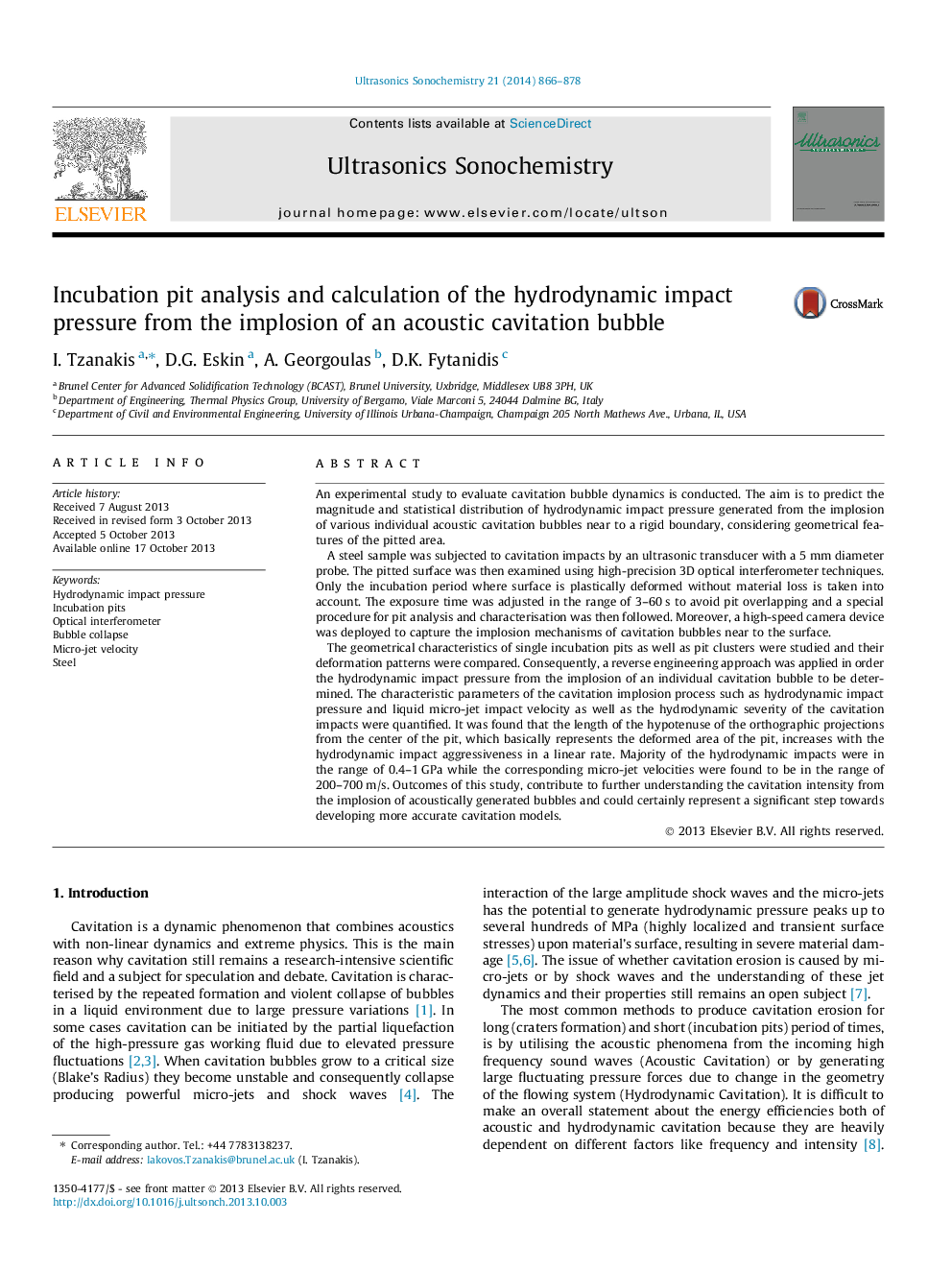| Article ID | Journal | Published Year | Pages | File Type |
|---|---|---|---|---|
| 1265170 | Ultrasonics Sonochemistry | 2014 | 13 Pages |
•Main deformation mechanism of the pitted surface found to be the liquid micro-jet.•Pit geometrical characteristics compared with pits from different cavitation sources.•Bubble behavior near boundary was identified using high-speed camera techniques.•Hydrodynamic impact pressure is linearly proportional to the deformed area of the pit.•Hydrodynamic severity of cavitation impact and jet impact velocity were quantified.
An experimental study to evaluate cavitation bubble dynamics is conducted. The aim is to predict the magnitude and statistical distribution of hydrodynamic impact pressure generated from the implosion of various individual acoustic cavitation bubbles near to a rigid boundary, considering geometrical features of the pitted area.A steel sample was subjected to cavitation impacts by an ultrasonic transducer with a 5 mm diameter probe. The pitted surface was then examined using high-precision 3D optical interferometer techniques. Only the incubation period where surface is plastically deformed without material loss is taken into account. The exposure time was adjusted in the range of 3–60 s to avoid pit overlapping and a special procedure for pit analysis and characterisation was then followed. Moreover, a high-speed camera device was deployed to capture the implosion mechanisms of cavitation bubbles near to the surface.The geometrical characteristics of single incubation pits as well as pit clusters were studied and their deformation patterns were compared. Consequently, a reverse engineering approach was applied in order the hydrodynamic impact pressure from the implosion of an individual cavitation bubble to be determined. The characteristic parameters of the cavitation implosion process such as hydrodynamic impact pressure and liquid micro-jet impact velocity as well as the hydrodynamic severity of the cavitation impacts were quantified. It was found that the length of the hypotenuse of the orthographic projections from the center of the pit, which basically represents the deformed area of the pit, increases with the hydrodynamic impact aggressiveness in a linear rate. Majority of the hydrodynamic impacts were in the range of 0.4–1 GPa while the corresponding micro-jet velocities were found to be in the range of 200–700 m/s. Outcomes of this study, contribute to further understanding the cavitation intensity from the implosion of acoustically generated bubbles and could certainly represent a significant step towards developing more accurate cavitation models.
